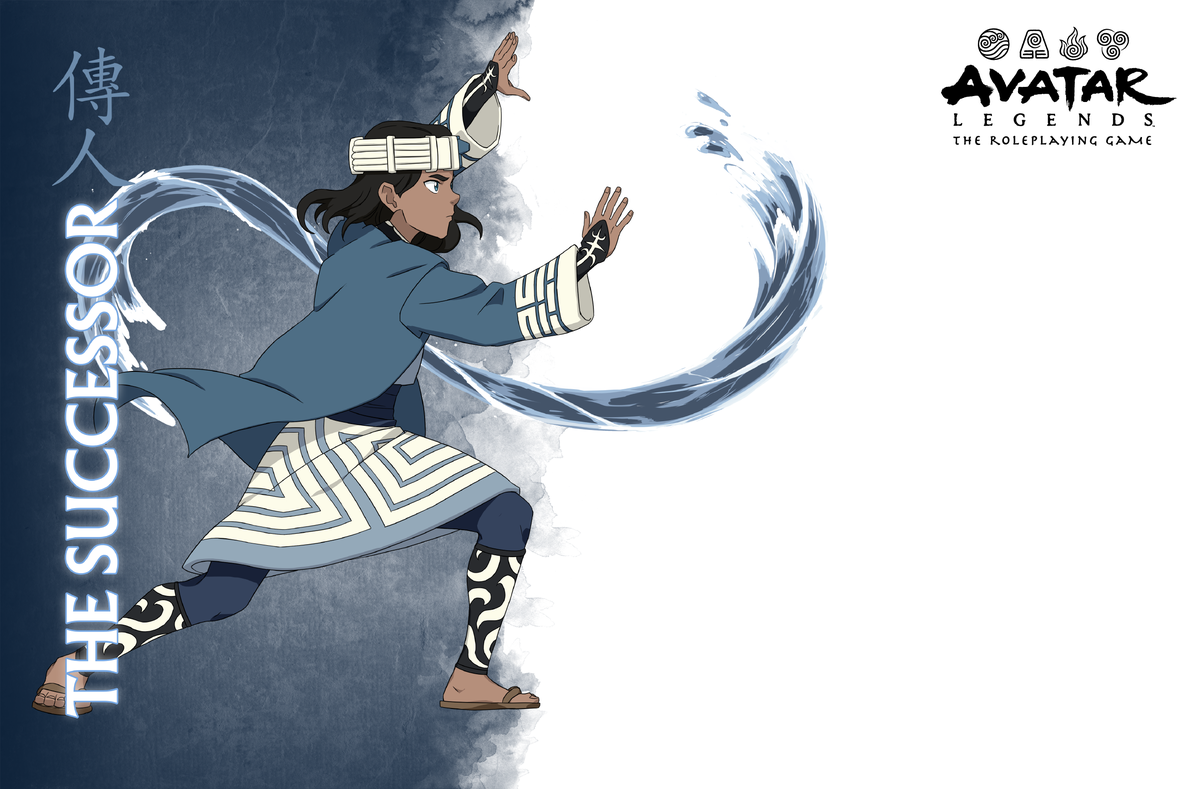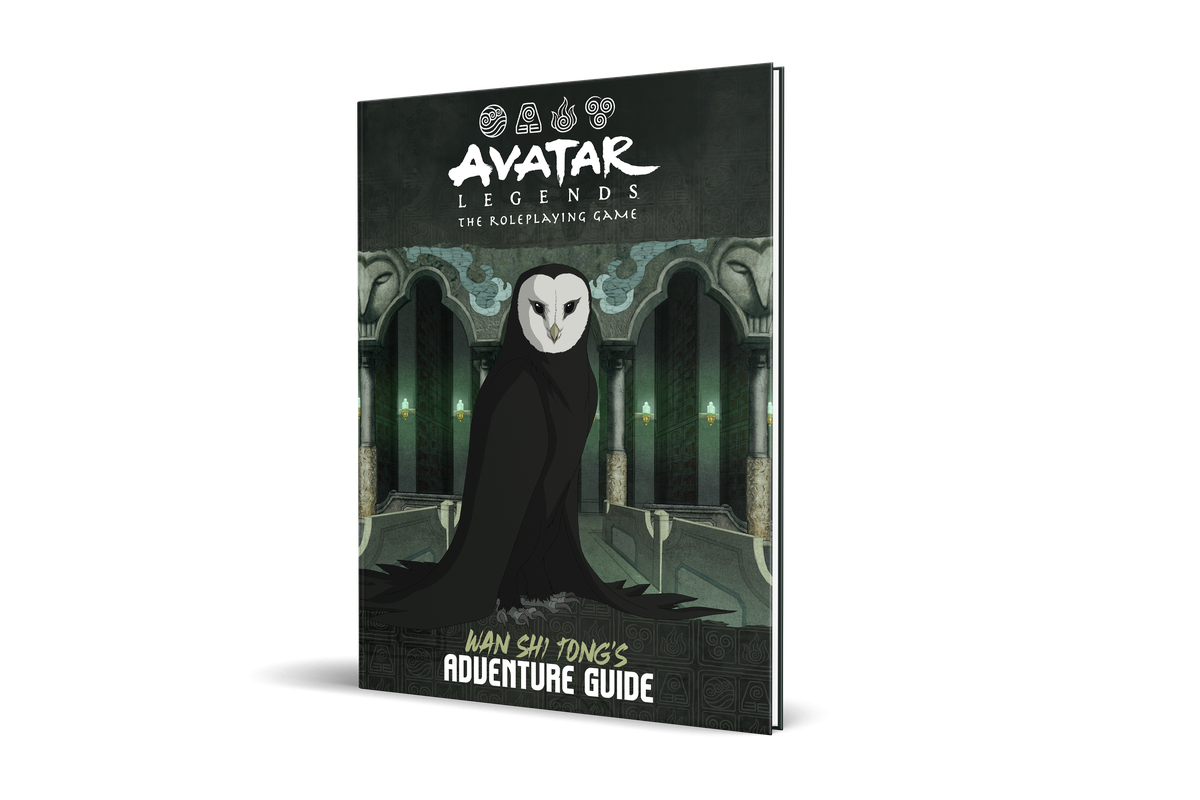Flameo, Hotman! Avatar Legends: The Roleplaying Game, Magpie Games’ tabletop role-playing game set in the Avatar: The Last Airbender and The Legend of Korra universe, is officially available for pre-order. It initially launched via Kickstarter, meeting its funding goals in just 16 minutes. Now anyone can own a copy.
If you’re a fan of Avatar and Korra but not as familiar, or even completely unfamiliar, with TTRPGs, don’t fret. Avatar Legends is designed to be welcoming to newcomers, while offering depth that will be satisfying to those who have tons of experience around the table. Players have freedom to express their creativity — from bending or weapon style to time period and objective — all within the wonderful world and themes of Avatar.
Image: Nickelodeon Animation Studio
Playing a session of Avatar Legends should feel like creating your own episode of Avatar or Korra.
The game uses Powered by the Apocalypse, a framework designed by Meguey Baker and Vincent Baker, that puts group storytelling front and center. The dice roll doesn’t determine whether something will happen, but how it will happen. Maybe you’re trying to hide from Dai Li agents, or perhaps lob a rock at an airship. There are lots of ways your attempts might shake out — and negative outcomes have consequences. Maybe the rock fails to make contact, or hits in a spot you weren’t expecting; the benders on board can see you now and are throwing projectiles your way. How will you react? Think of it like a protracted game of “yes, and” where you’re always thinking on your feet.
The Avatar universe spans decades, and players can run a campaign in one of five eras: Kyoshi, Roku, Hundred Year War, Aang, or Korra. The era dictates the power struggle, and the canon characters (called Legends in the game) you’ll meet along the way. Do you want to lend a helping hand in a world marred by imperialist domination, or tenderly navigate an era of reconstruction and technological advancement? (As little is known about the Roku era, Magpie worked with Avatar creators Michael DiMartino and Bryan Konietzko to write never-before-released canon material.) Stories can be lighthearted or serious — or local or regional in scope, or on a global scale.

Image: Magpie Games
Finally, players agree on a “focus” — fertile ground for generating a story set in the Avatarverse. Will you launch a rescue, like when Zuko and Sokka break Suki out of Boiling Rock or when Tenzin, Kya, and Bumi searched for Ikki? Will you attempt to learn, like when Team Avatar wrested secrets from Wan Shi Tong’s Spirit Library? Or perhaps you’d rather take down an intimidating foe, like when Korra and friends fought Kuvira’s massive metal-bent mecha.
Can I make my favorite Avatar or Korra characters?

Image: Magpie Games
In Avatar Legends, you’ll make your own new characters, with the help of playbooks. This means play can start fairly quickly, compared to a traditional Dungeons & Dragons campaign. Playbooks focus on archetypes — for example, the Prodigy has prolific mastery of technique, a clear nod to Toph, the Blind Bandit whose superhuman Earthbending made her a difficult rival. These playbooks give characters a narrative compass guiding their emotional arc, helping the group determine the types of stories they’d like to tell.
“By choosing the Successor, you’re not just saying, ‘Hey, I have this powerful family,’” said Mark Truman, co-founder and CEO at Magpie, and core designer for Avatar Legends. “You’re also saying, ‘These are the kinds of things I want our game to be about.’ And now the [game master] can say, ‘Cool, your powerful family is going to show up all the time, and it’s going to be a huge part of the story that your powerful family matters.’”
Avatar Legends classes, called Trainings, mean you can create a character with any of the four bending styles, or focus them on weapons or technology. It’s all mix and match. You might build a Guardian archetype who fights with technology like Asami’s electric glove, intent on protecting another player at the table, or a trusty boomerang Prodigy. This ensures benders aren’t just given pride of place. “Sokka’s journey is as important as anybody else’s,” Truman said.
Each playbook also includes a balance meter, which guides a player’s beliefs, evolving as the character’s ideology shifts. The show is premised on the importance of balance — balance between the bending nations, balance between personal extremes. The Successor, for example (think of Zuko or Mai), is torn between tradition and progress; a Moment of Balance will play like a climactic point in an episode, like Zuko choosing to defy the Fire Nation to join the Avatar Gaang. Under specific circumstances, players can also change playbooks, adding even more customizability.
Players can ultimately make whoever they want and tell a compelling story with them. A few qualities hold steady, in the spirit of the show. Each of you is a hero who has “answered the call willingly” (according to the rulebook), which means your friend group won’t fracture or completely fall apart under stress, just like the Gaang. Because the game is focused less on “fighting” and more on “heroism, tough choices, and balance,” Truman said, the door is open to possibilities.
“We want players to come to the table and say, ‘OK, I’m an Earthbender, but I don’t bend big chunks of Earth, I always bend crystals,’” Truman said. “That might not be a great fit for a canon story, but within the story you’re telling at your table, we want to embrace that, and be like, Yeah, that’s awesome.”
Cultural competency in an evolving world
Avatar Legends is set in a world inspired by Asian and North American Indigenous cultures, just as the original television shows were.
“One thing Mike [DiMartino] and Bryan [Konietzko] did that was really smart was make it just an Asian and Indigenous world, and treat it the way Lord of the Rings treats English peasantry and English stories as the lingua franca of that world,” Truman said. “It means that everything that happens in the Avatarverse has the potential to be part of that experience. And yet no part of it is supposed to map directly, Oh, these people are Japanese, these people are Korean.”
Independent designers have long been diversifying the tabletop games space, making it more inclusive for players of color and queer players. At the same time, legacy TTRPGs like D&D are still in the process of grappling with a Eurocentric legacy, which included racist depictions of races like orcs. (Wizards of the Coast recently apologized for its depictions of the Hadozee race.)
Avatar Legends is positioned — as an adaptation of a beloved franchise with an existing legion of fans — to be a widely played, immersive TTPRG set outside of the European subcontinent. But it also presents a challenge, as the Avatarverse mixed together different Asian and Indigenous cultures to create its world. (In past interviews, DiMartino and Konietzko have said that this was largely to prevent characterizing any particular culture as villainous). In 2022, striking that balance between cultural accuracy and drawing inspiration from such cultures to create a fantastical universe is even more challenging.
“It’s a pan-Asian experience with a lot of rich opportunity,” Truman said. “Some of it doesn’t work. Some of it works great. I think our job as an RPG company is to give you the tools to really make it true to your own experience, and to challenge white players to think about the ways in which this is still not a white world.”
To bring these stories to life, the team at Magpie Games — a minority- and woman-owned company — worked closely with a number of talented game designers who had expertise in the real-world regions the game draws inspiration from. This included bringing on James Mendez Hodes (a game designer and cultural consultant) as a core designer.
“We ended up with our core four designers — the three of us, Magpie plus Mendez — and then another level of contributing designers who were there, before we put pen to paper, to talk through all the major issues,” Truman said. “We have worked with that community of people for what’s been almost two years now to make this game great.”
The Magpie team worked with Dr. Siu-Leung Lee, who worked as translator and calligrapher on the project, and who was the calligrapher for both Avatar and Korra. “He was telling us these stories about how they came up with the original calligraphy,” Truman said.

Image: Magpie Games
Magpie is based in New Mexico, and the team also worked with contributing designer Dr. Lee Francis, founder of Native Realities and Indigenous Comic Con, on a Water Tribe adventure as part of the Wan Shi Tong game supplement. The story focuses on water rights, mirroring the real-life water rights battles in the state. “We want that Water Tribe sense of Indigeneity to be really strong within the stories,” Truman said.
And to guide players, the rulebook contains a section in its “Making Characters” chapter dedicated to guiding players through “playing outside your experience,” geared toward players who won’t share their character’s ethnic heritage. (Of course, many TTRPGs ask players to create characters outside their race — including races that are entirely fictitious. But many of these can and do take inspiration from the real world.) The Avatar Legends rulebook advises players to make sure they “portray a whole person, not just an identity or a label.”
“The Avatarverse is so amazing,” Truman said, noting his excitement “to get the chance to bring this to RPGs, and to have it never been done before.”
Avatar Legends: The Roleplaying Game was previewed using a digital copy provided by Magpie Games. Vox Media has affiliate partnerships. These do not influence editorial content, though Vox Media may earn commissions for products purchased via affiliate links. You can find additional information about Polygon’s ethics policy here.
